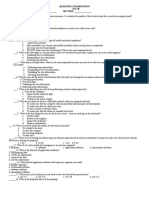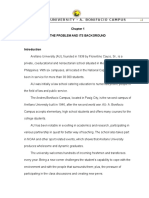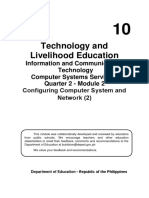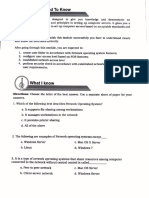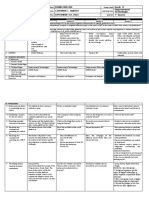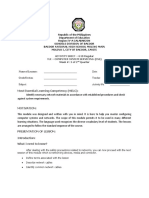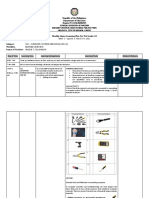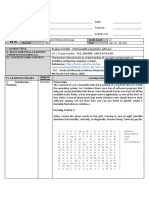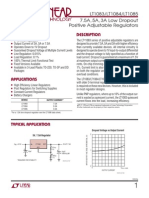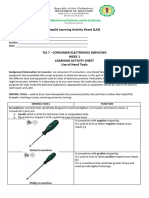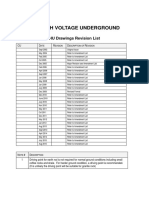0% found this document useful (0 votes)
254 views6 pagesTLE Grade-10 Networking Guide
This document provides a weekly home learning plan for a grade 10 TLE (Technology and Livelihood Education) class on Computer Systems Servicing. It includes a lecture on common network cables, identifying their key characteristics. Students are assigned multiple choice questions to test their understanding of cable types like twisted pair, coaxial, fiber optic and their categories. They are also asked short answer questions about fiber connectors, general connectors, and characteristics of cables like UTP, STP and coaxial. The plan is designed to be delivered through blended learning with the teacher posting materials online and students completing tasks independently.
Uploaded by
arlyn villanuevaCopyright
© © All Rights Reserved
We take content rights seriously. If you suspect this is your content, claim it here.
Available Formats
Download as DOCX, PDF, TXT or read online on Scribd
0% found this document useful (0 votes)
254 views6 pagesTLE Grade-10 Networking Guide
This document provides a weekly home learning plan for a grade 10 TLE (Technology and Livelihood Education) class on Computer Systems Servicing. It includes a lecture on common network cables, identifying their key characteristics. Students are assigned multiple choice questions to test their understanding of cable types like twisted pair, coaxial, fiber optic and their categories. They are also asked short answer questions about fiber connectors, general connectors, and characteristics of cables like UTP, STP and coaxial. The plan is designed to be delivered through blended learning with the teacher posting materials online and students completing tasks independently.
Uploaded by
arlyn villanuevaCopyright
© © All Rights Reserved
We take content rights seriously. If you suspect this is your content, claim it here.
Available Formats
Download as DOCX, PDF, TXT or read online on Scribd
/ 6











